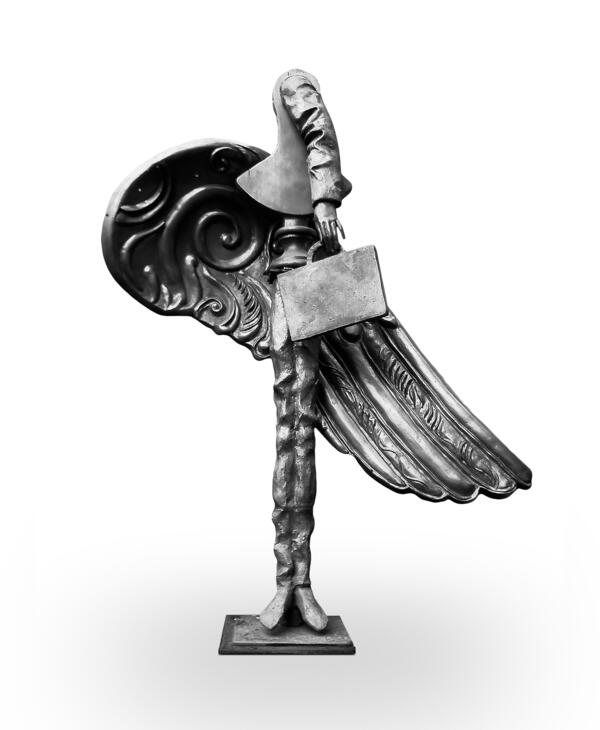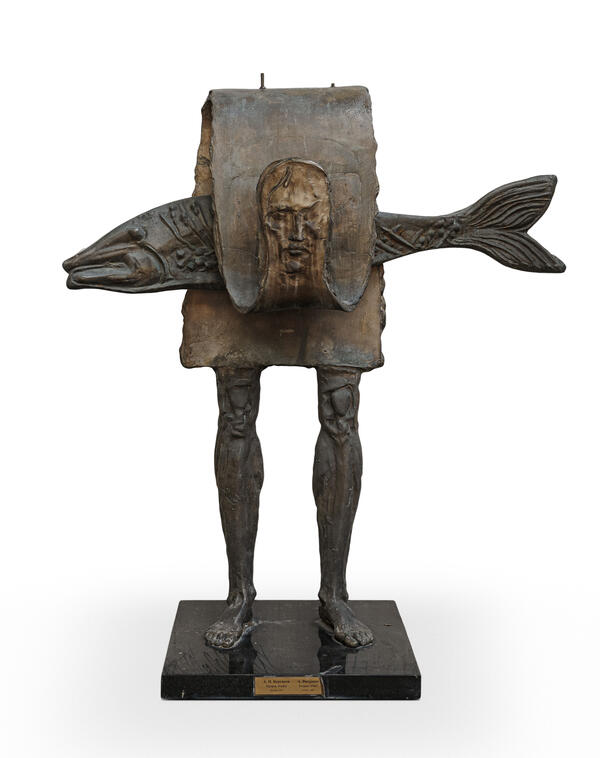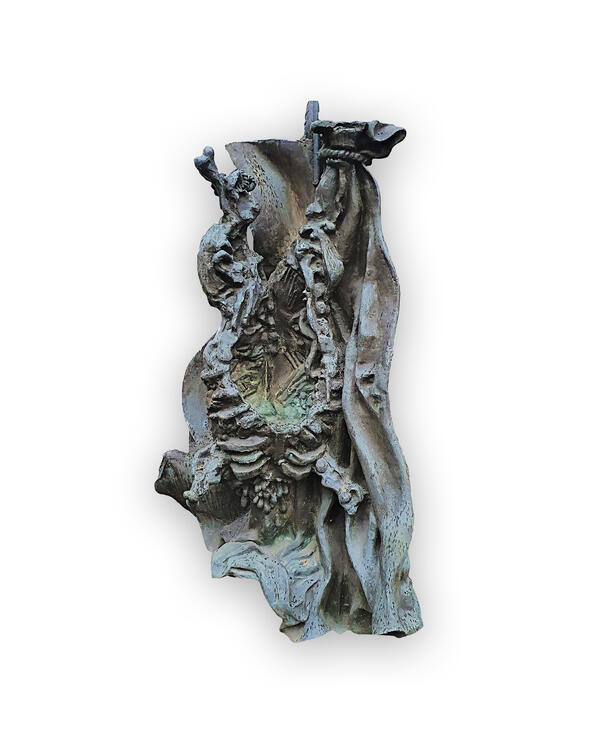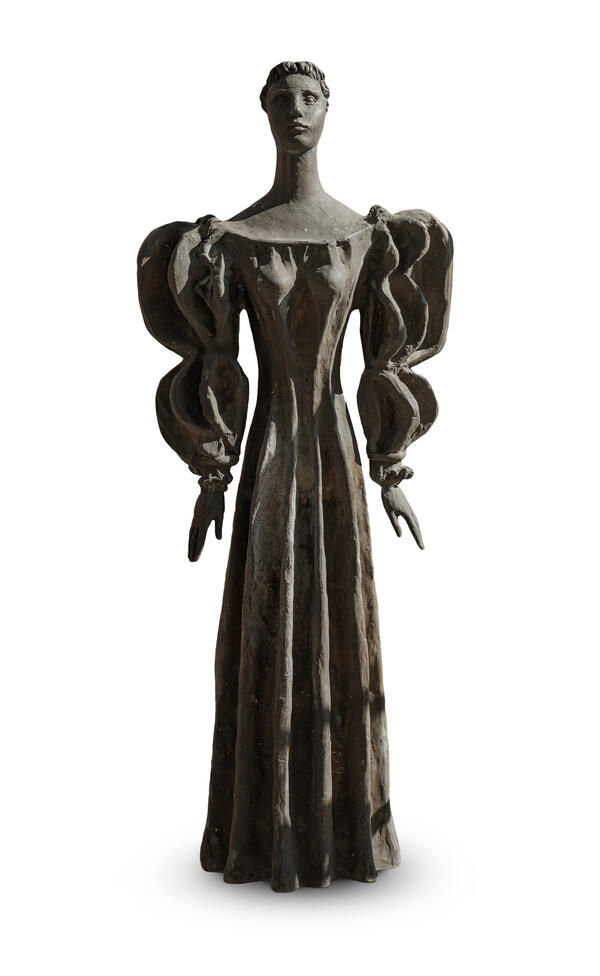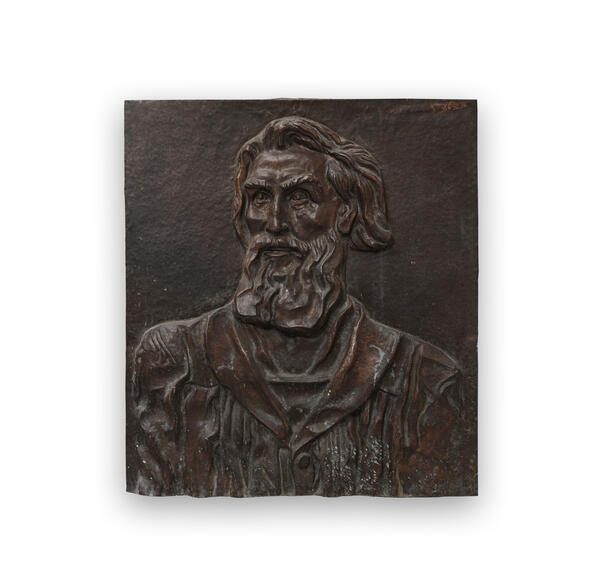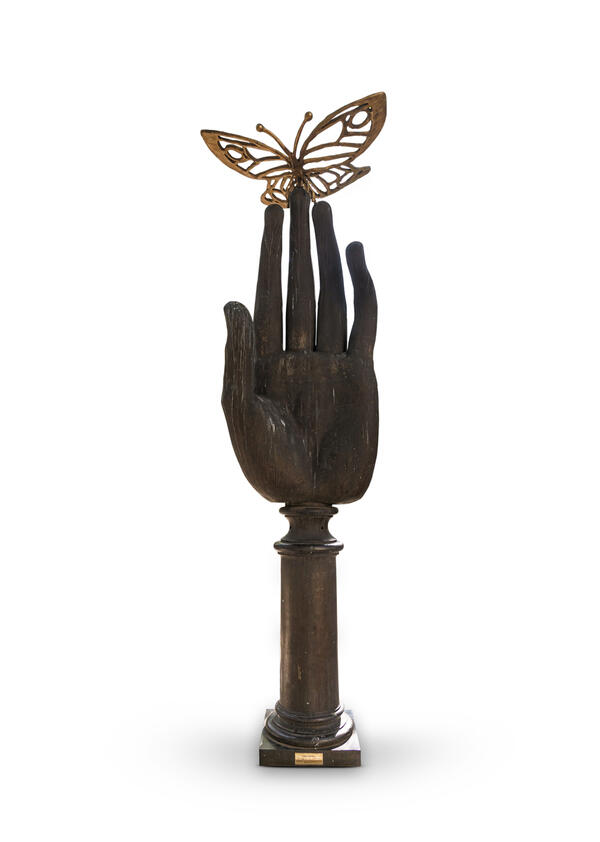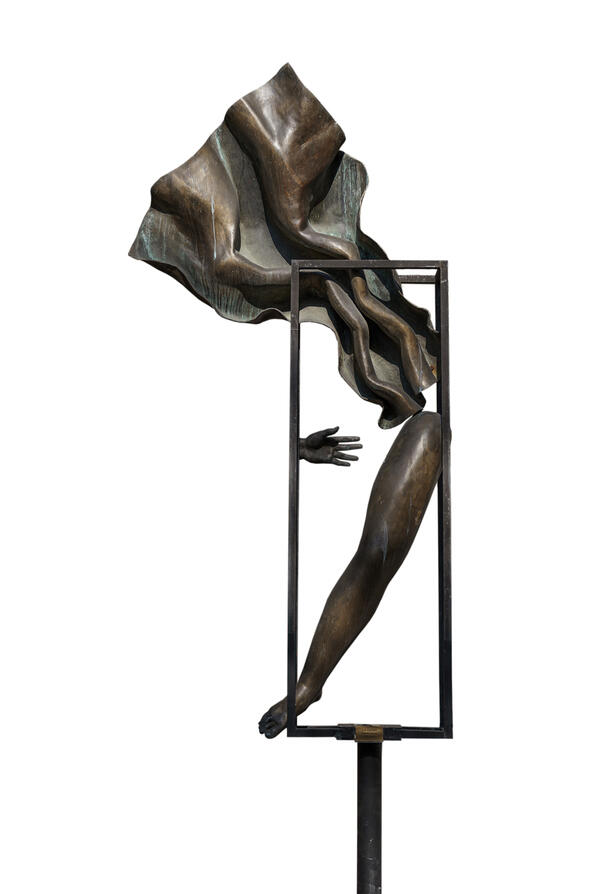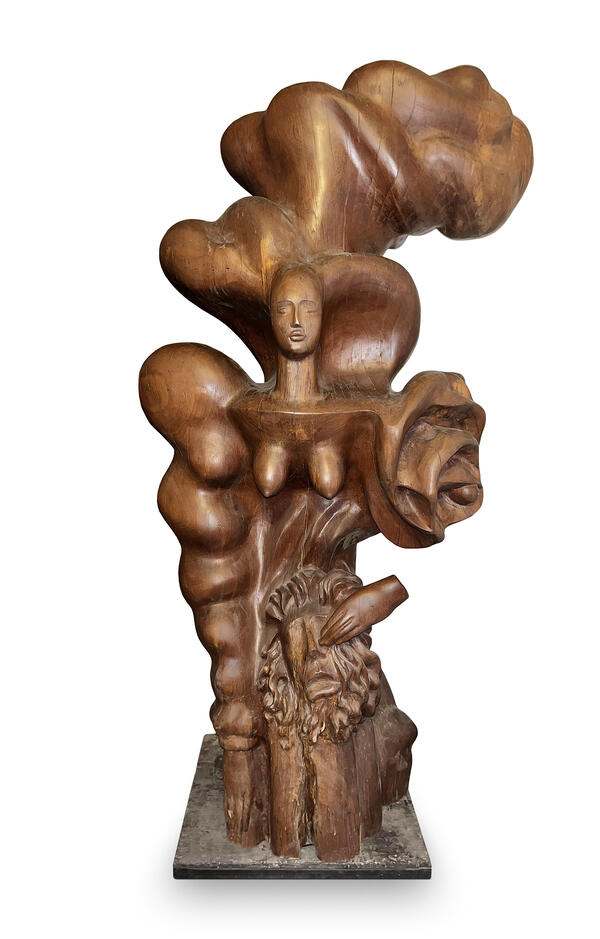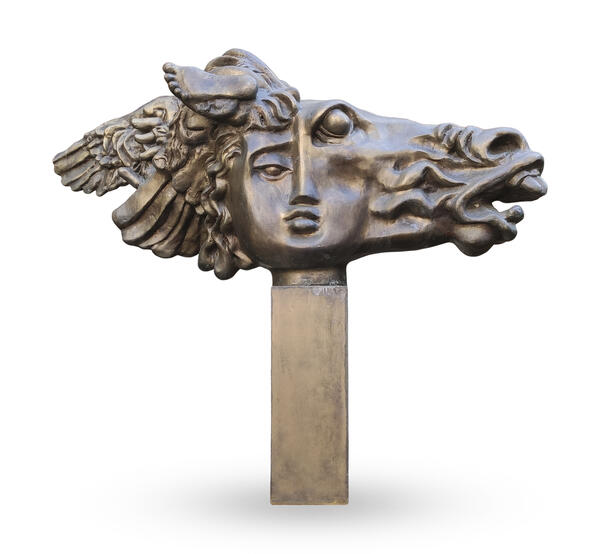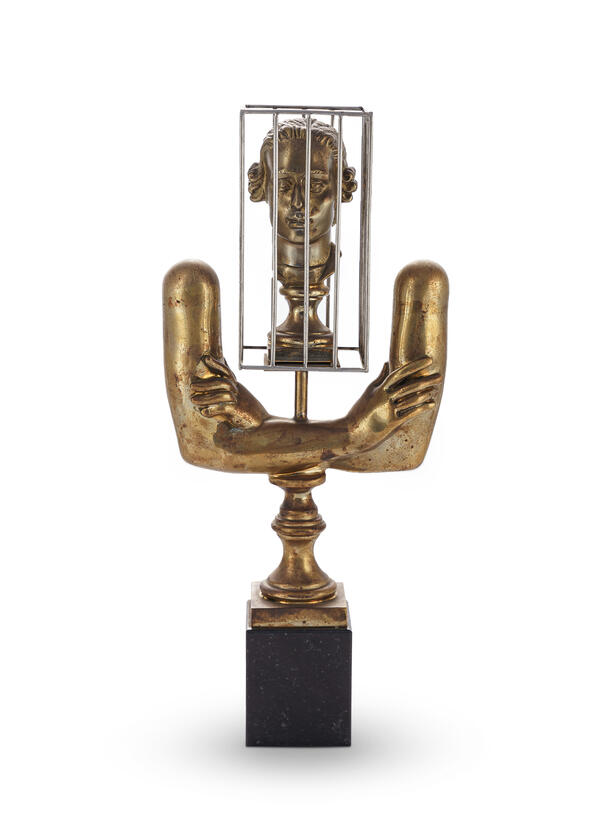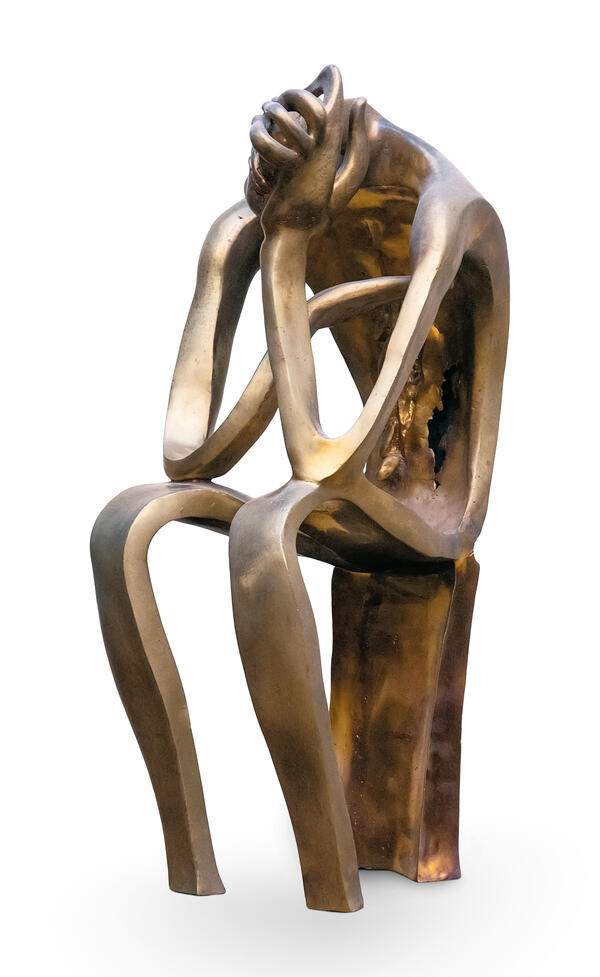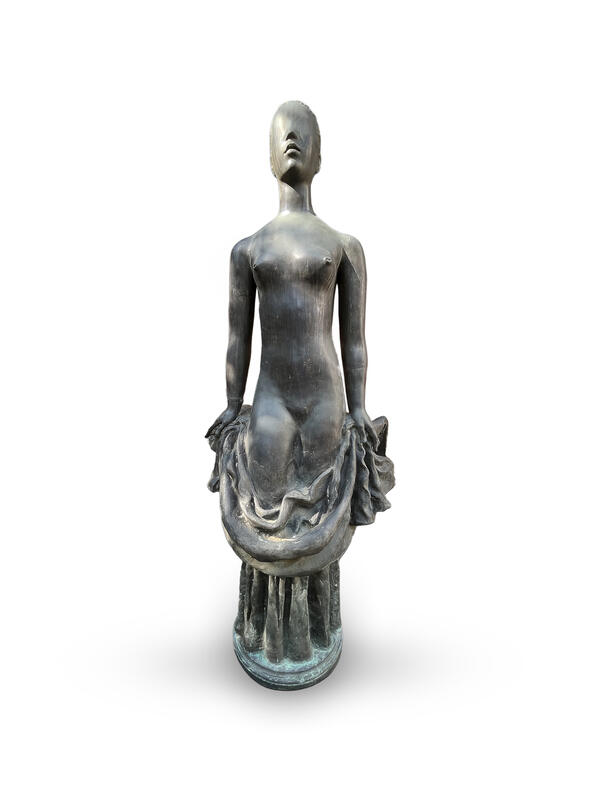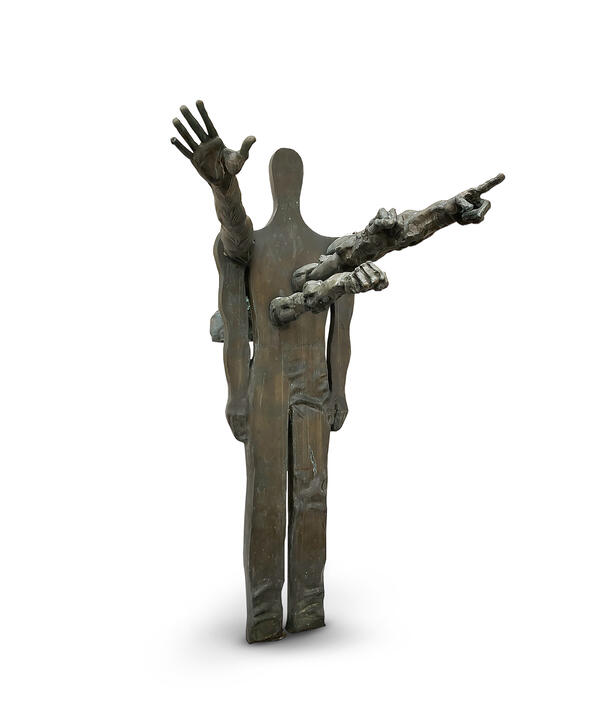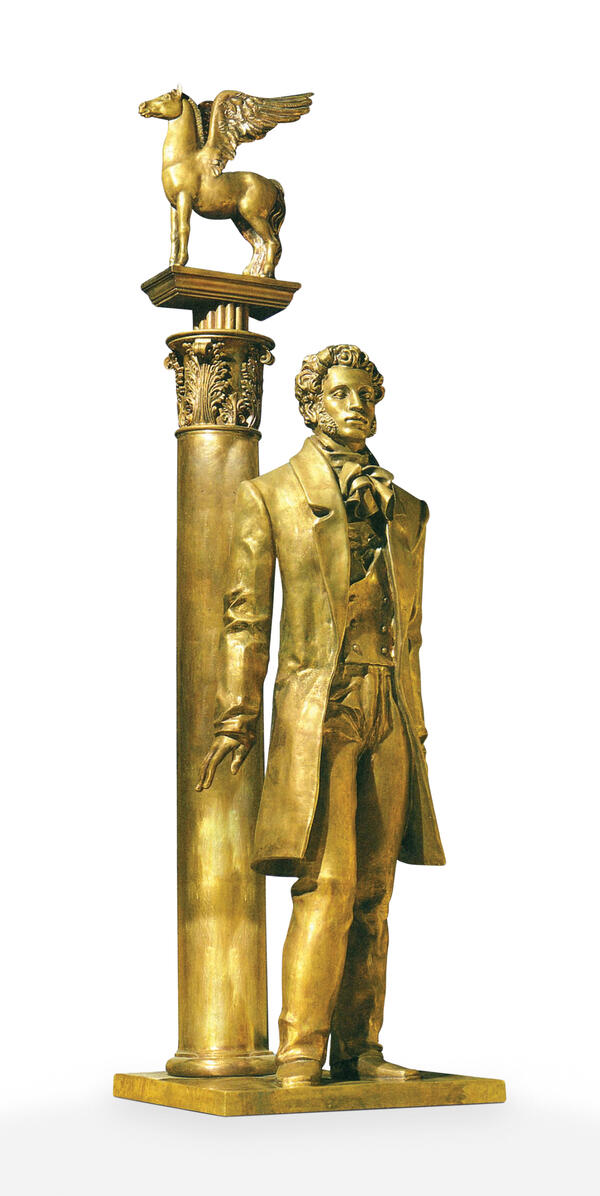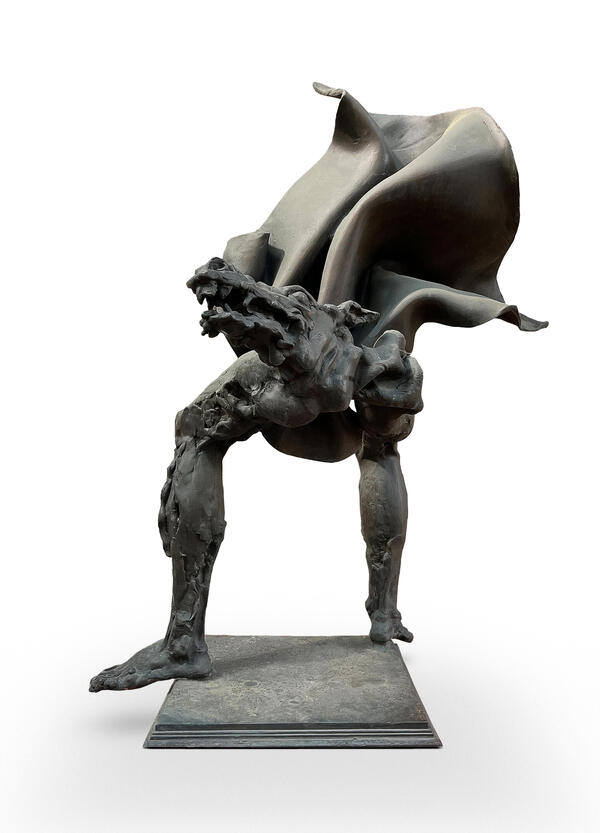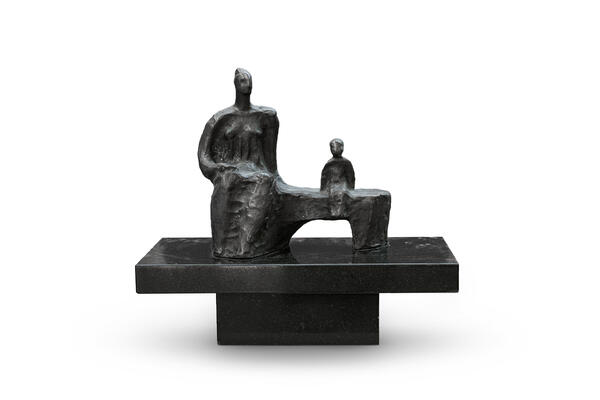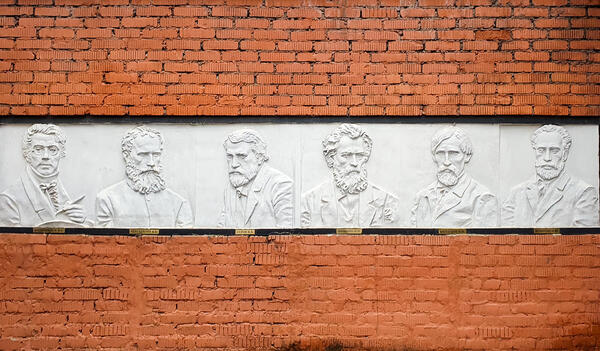The exhibition features a sculptural composition consisting of two wheels of different sizes placed on a horizontal axis. One side of the installation ends with an open palm, while the other side features an outstretched arm. In the center, a female head bows down against the background of rippling drapery. Below, between the two wheels, is the lower half of the body of a young man.
Throughout the centuries, many artists have drawn inspiration from the Bible. Some strictly followed the canonical approach, like the Byzantine artists. Some introduced secular elements into their compositions, like Raphael and Michelangelo. Others interpreted the stories and experimented with form freely, like Picasso and Bourdelle. Regardless of the time period, all these artists were inspired by episodes from Christian history.
The sculptor Alexander Nikolayevich Burganov has also repeatedly turned to biblical scenes. In such artworks, the artist’s personality is demonstrated in a particularly vivid manner. His interpretation of Gospel events is always complex, ambiguous, and tragic. Not being a religious artist, Alexander Burganov has reinterpreted the essence of many events and moved away from a straightforward, traditional approach. He has avoided canonical iconography and instead filled his works with a deep philosophical meaning.
The composition “Requiem” is a significant element of the artist’s oeuvre. In this sculpture, Alexander Burganov provided a philosophical interpretation of the Lamentation of Christ (the Pietà) which is depicted in numerous masterpieces created over the centuries. In this case, the viewer gets only a hint of the biblical event: the drapery seems to freeze over the figure of the Virgin Mary. At the top, there is a silhouette of a tilted female head framed by folds of cloth.
The artist turned the Requiem scene
and the theme of sacrifice into a matter of universal significance affecting
the fate of the entire mankind. The metaphysical nature of the phenomena is
presented in an irreconcilable contradiction. The divine and the human, the
eternal and the perishable are the main dualities explored by Alexander
Burganov in his compositions.



